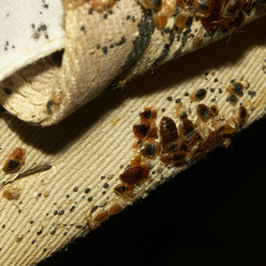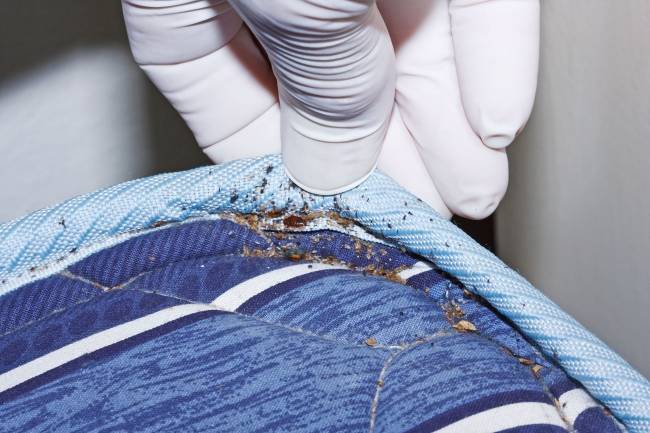Bed bugs are bad news! They bite, and if not dealt with, they can spread rapidly. Let’s face it, bed bugs are disgusting — they leave bloodstains, carcasses, and feces all around your home. So, you definitely need to get rid of them as quickly as possible… But how long does it really take to get rid of bed bugs completely?
Getting Rid of Bed Bugs — Treatment Info
Bed bug treatments usually last 3-6 weeks with about 2-4 treatment sessions. Each session will last about 1-3 hours. However, these numbers are not set in stone. More weeks, sessions, and hours may be necessary. Here are the biggest factors that determine how long it will take to get rid of bed bugs.
- Severity and size of the infestation. It’s actually possible to get rid of bed bugs with only one treatment session, especially if the infestation is concentrated in a small area. But bed bugs can spread in your home fast. They can thrive not just in mattresses, but also in carpets, curtains, furniture, piles of clothes, and walls.
- Reach of the treatment. There are two general types of bed bug treatments — heat treatment and insecticide. Each has its own advantages, but both have the same disadvantage — they have the tendency to not reach some bed bugs. This is especially true for bed bugs who burrow deep into mattresses. This is why it’s ideal to have multiple treatment sessions. You want to make sure that the pest control professionals have actually reached all the bed bugs.
- Bed bug resistance. Some bed bugs are starting to gain resistance to certain insecticide ingredients like pyrethroids. You may have a huge headache in your hands if the bed bugs you have at home are resistant. Heat treatments are better in this regard, but they require very specific temperatures to kill bed bugs, so they are not exactly foolproof either.

Tips for Getting Rid of Bed Bugs
Bed bug treatments should be done by properly licensed pest control professionals. But this doesn’t mean you can completely put yourself out of the equation and just let the professionals handle everything themselves. You may help in getting rid of the infestation. Here are some quick tips.
1. Identify a bed bug infestation
First, you have to make sure that you are dealing with bed bugs and not something else entirely. Bed bugs are not the only small critters that can infest your home. Fleas and lice are some of the most common insects that get confused with bed bugs. It doesn’t help that they can thrive in mattresses either.
But it’s very easy to identify a bed bug infestation if you know what they look like. Bed bugs are dark brown insects that are about 4-7 mm in size. They are a lot bigger than fleas and lice. And they leave bloodstains, brown smear marks, and exoskeletons around your home. Bed bugs also release pheromones. You may not be able to smell a lone bed bug. But together, they can give off a musky smell in the room with an infestation.
2. Let a pest control professional handle the infestation
There are a lot of DIY solutions to your bed bug problems. You can try to get rid of them with vacuums and steam cleaners. But remember that bed bugs are very good at hiding and resisting. They are not the usual pest you can kill with overly simplistic methods.
It’s best to let pest control professionals deal with your bed bug problems. They can use heat or insecticide to get rid of the bed bug infestation. With the heat method, the infested area will be subject to a specific temperature that is enough to kill bed bugs. With the insecticide method, the infested area will be bombarded by a pesticide specifically formulated for bed bugs.
3. Use DIY methods as the first line of defense
Yes, DIY methods are not likely to get rid of entire bed bug infestations. But they can help. They can be your first line of defense until the pest control professionals diagnose your problem and come up with an effective plan to eliminate the pests. Here are some quick DIY methods you should try:
- Use a vacuum cleaner. Vacuum all surfaces. The more powerful the vacuum cleaner, the better. Make sure to throw away the contents of the vacuum bag in a garbage can outside of your home to prevent reinfestations.
- Wash all fabrics and linens. Bed bugs can be on your bedsheets, carpets, curtains, and piles of clothes. Wash everything that can be washed. If possible, use a hot setting in your washing and drying machine to kill off bed bugs.
4. Prevent the further spread of the pests
Give your pest control professionals an easier time by trying to control the spread of the bed bugs in your home. The more contained the infestation is, the easier it is to eliminate.
- Avoid moving items from room to room. There may be bed bugs in small objects around your home, such as pillowcases, stuffed toys, and travel bags. You will never know for sure which ones have hitchhiking bed bugs on them. Just to avoid spreading the bed bugs on your home, don’t move items from room to room until the infestation is handled properly.
- Consider getting a mattress encasement. A mattress encasement can isolate your mattress and prevent the spread of bed bugs. It’s not a perfect bed bug control method. But it may help if the infestation has not yet spread beyond your mattress. It will also help in avoiding bed bug bites.

5. Follow after-treatment procedures
Bed bug treatments have after-treatment procedures to avoid reinfestations and ensure your safe return to your home. This is especially true if the insecticide method is used. There may be lingering effects that could be hazardous to your health. But the heat method can also be hazardous. It’s not uncommon for heat treatments to be followed up by insecticides that will prevent future infestations.
- Communicate properly with your pest control professionals. Talk to your pest control professionals to know what to do after each treatment session. They may ask you to stay away from the treated area for a few hours and then clean the area once it is safe to go back.
- Watch out for bed bugs that may have survived. Again, bed bugs are resilient creatures. Some of them may survive the bed bug treatment, breed, and start another full-blown infestation. Even after all the treatment sessions are completed, be on the lookout for live bed bugs and their carcasses.
It takes a Few Weeks to get rid of Bed Bugs for good
The length of the bed bug treatment will depend on the severity of your case. But usually, it takes 3-4 weeks with about 2-4 sessions. It’s best to let pest control professionals do the treating. Bed bugs are complicated and resilient pests, so amateurs may have a hard time getting rid of them.
With that said, there are some things you can do to give your pest control professionals an easier time. Use DIY methods to complement their treatments, prevent the further spread of the bed bugs, and listen to their after-treatment instructions.

